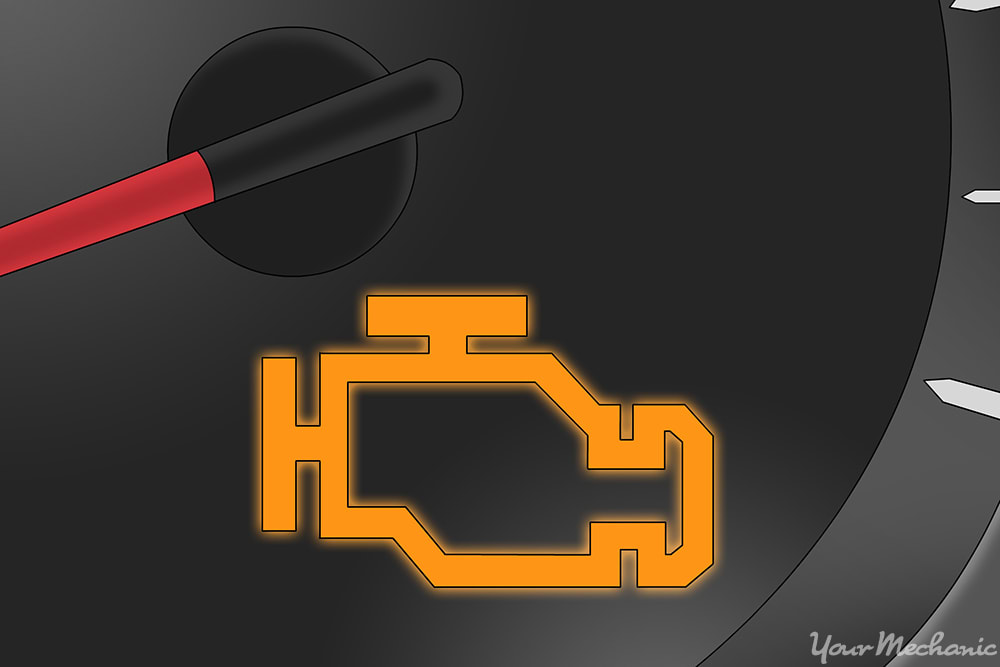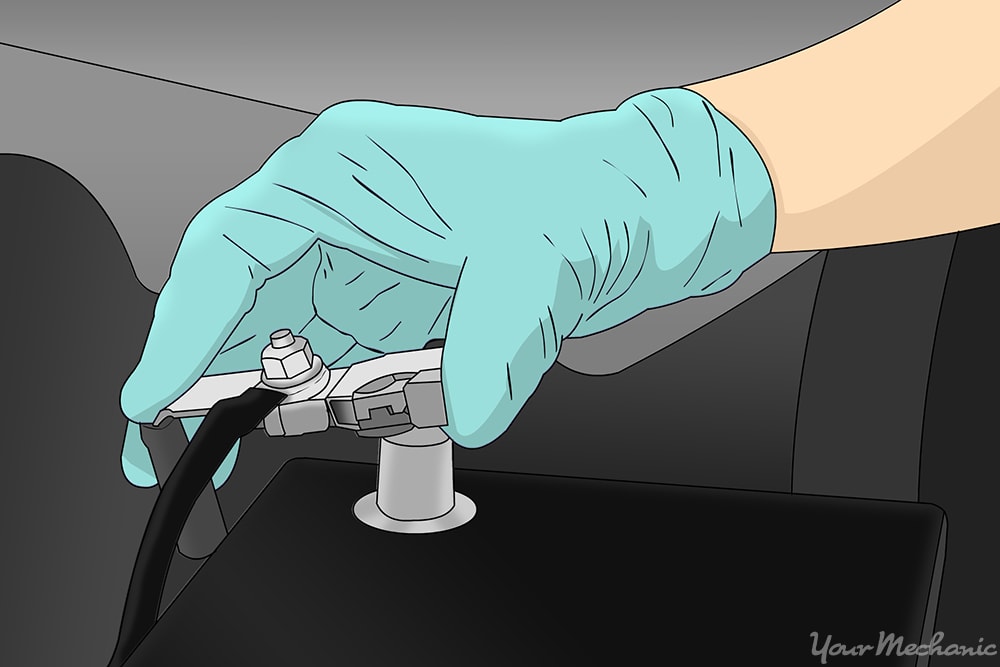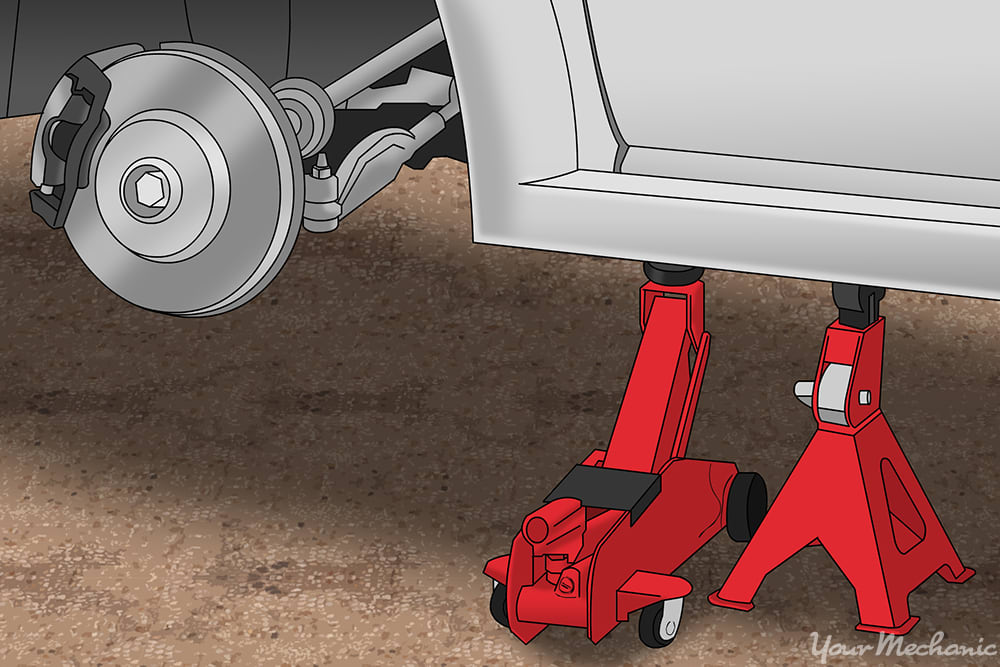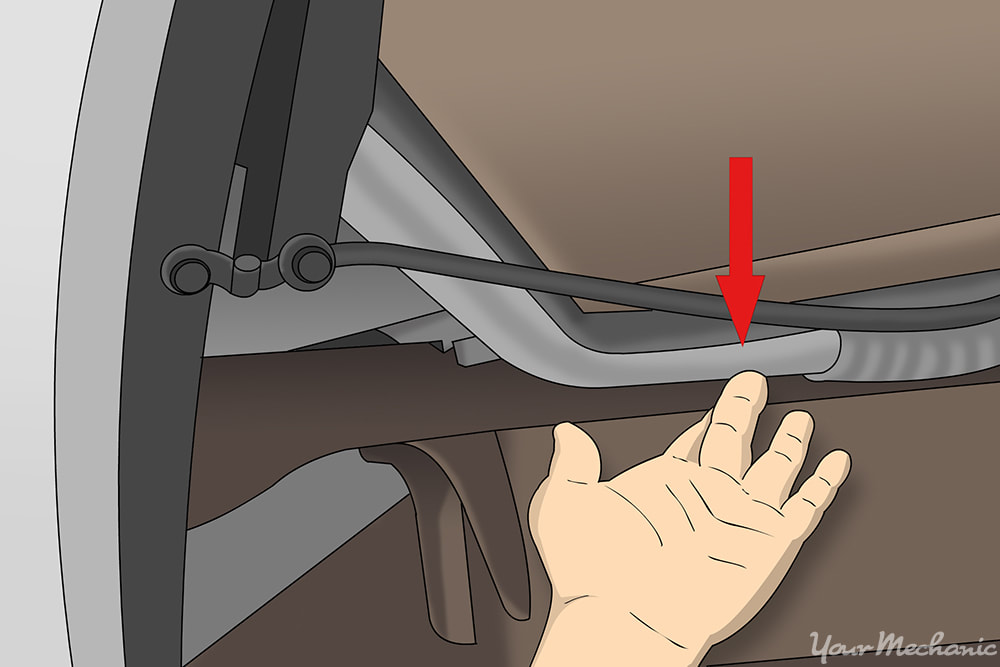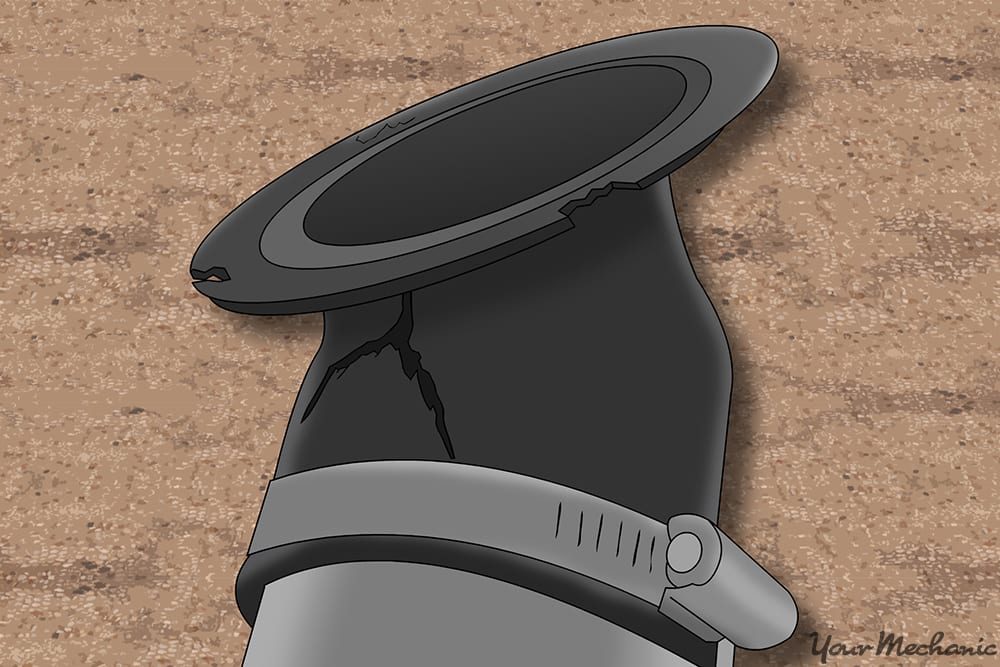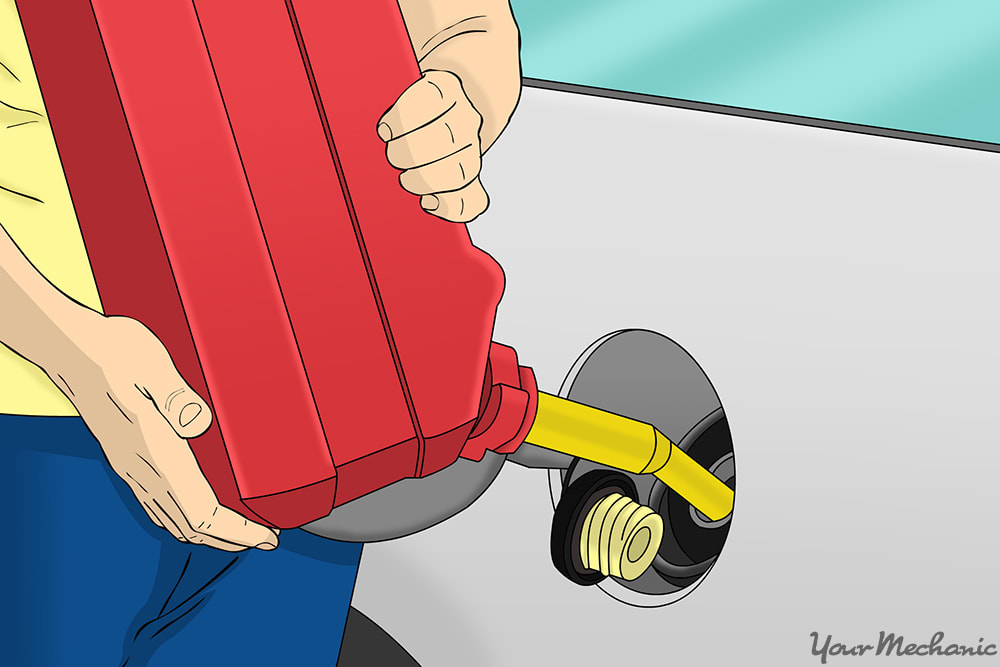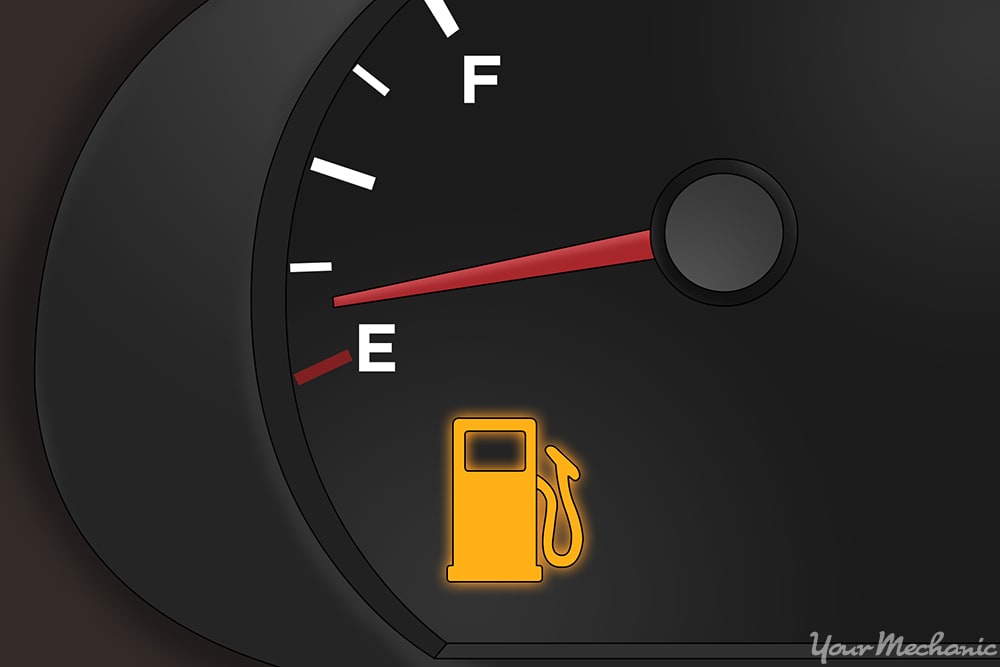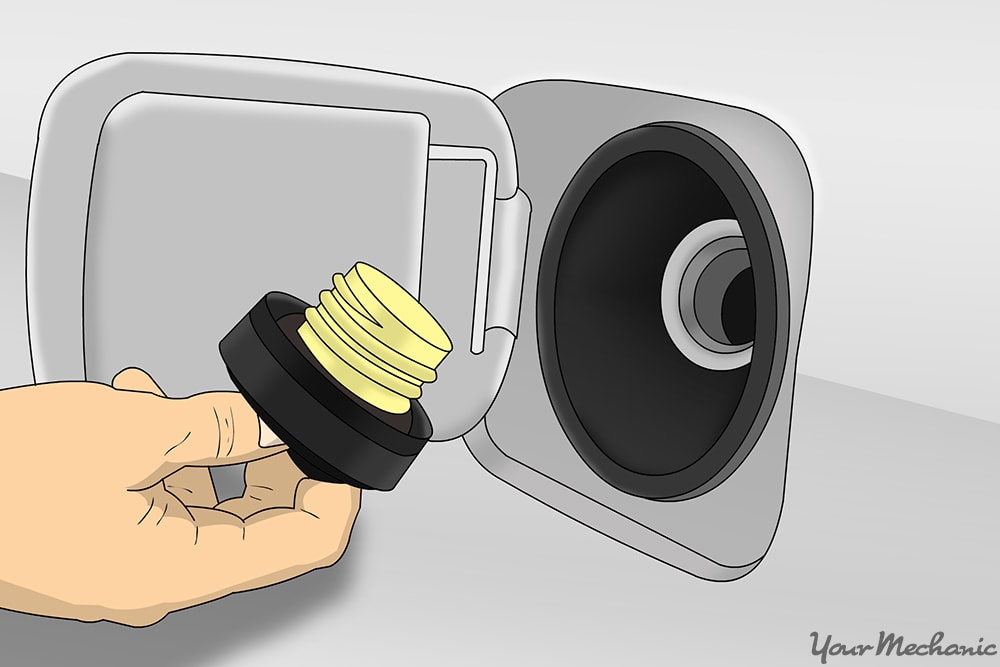

The fuel filler neck on passenger vehicles is a solid piece of formed tubular steel that joins the fuel filler inlet and the rubber fuel fill hose on the gas tank. The fuel filler neck is connected to the body inlet cutaway with steel screws and is fitted inside a rubber hose attached to the vehicle’s fuel tank.
There is a steel hose clamp around the rubber hose to seal the fuel filler neck to prevent any fuel leakage. Inside the fuel filler neck, there is a one way valve that prevents any object from entering the fuel tank, like a syphon hose. Over time, the fuel filler neck rusts, creating leaks. Plus, the rubber hose becomes weather-cracked, causing a fuel leak.
Fuel necks on older vehicles may have a short neck and a metal tube in the fuel tank. These types of fuel necks are joined with a long rubber hose with two clamps.You can purchase replacement fuel filler necks from auto parts stores and from the dealership.
Fuel leakage in a vehicle can be very dangerous. Liquid fuel does not burn, however, the vapors given off the fuel is extreme flammable. If there is a leak at the fuel filler neck, there is a risk of the fuel vapors igniting when rocks are thrown up into the wheel well or under the vehicle causing a spark.
Note: It is recommended that you purchase a fuel filler neck from the dealership since it is an original manufactured equipment, or OEM. Fuel filler necks that are aftermarket may not fit into your vehicle and also may not mount correctly.
Warning: Do not smoke around a vehicle if you smell fuel. You are smelling the vapors which are very flammable.
Part 1 of 5: Verifying the fuel filler neck condition
Step 1: Locate the fuel filler neck. Visually look at the fuel filler neck for any exterior damage.
Check to see if all of the mounting screws are inside the fuel door area. Verify that the rubber hose and clamp are visible and if there is any damage.
- Note: On some vehicles, you may not be able to check the rubber hose and clamp under the vehicle. There may be a cover that protects the fuel hose from debris, which needs to come off for inspection.
Step 2: Determine if the fuel filler neck is leaking vapors. If the fuel filler neck leaks vapors out, the engine management system records this.
Sensors sniff for vapors and make the engine light come on when vapors are present. Some common engine light codes related to fuel vapors near the fuel filler neck are as follows:
Part 2 of 5: Replacing the fuel filler neck
Materials Needed
- Allen wrench set
- Boxed end wrenches
- Breaker bar
- Combustible gas detector
- Drip pan
- Flash light
- Flathead screwdriver
- Floor jack
- Fuel resistant gloves
- Fuel transfer tank with pump
- Jack stands
- Needle nose plyers
- Protective clothing
- Ratchet with metric and standard sockets
- Torque wrench
- Torque bit set
- Transmission jack
- Safety glasses
- Wheel chocks
Step 1: Park your vehicle on a flat, hard surface. Make sure that the transmission is in park (for automatics) or in 1st gear (for manuals).
Step 2: Place wheel chocks around the tires. In this case, the wheel chocks will be around the front tires since the rear of the vehicle will be lifted up.
Engage the parking brake to the lock the rear tires from moving.
Step 3: Install a nine volt battery saver into your cigarette lighter. This will keep your computer live and keep your setting current in the vehicle.
If you do not have a nine volt battery saver, that is okay.
Step 4: Open the vehicle’s hood to disconnect your battery. Take the ground cable off of the battery’s negative post disabling the power to the fuel pump or sending unit.
Step 5: Raise the vehicle. Using a floor jack, lift under the vehicle at its specified jacking points until the wheels are completely off the ground.
Step 6: Place the jack stands. The jack stands should go under the jacking point locations; lower the vehicle onto the jack stands.
For most modern cars, the jacking points for jack stands will be on the pinch weld just under the doors along the bottom of the car.
- Note: Best to follow the vehicles owners manual for proper jacking locations.
Step 7: Open the fuel door to gain access to the fuel filler neck. Remove the mounting screws or bolts attached to the cutaway.
Step 8: Remove the fuel filler cap cable from the fuel neck and place aside.
Step 9: Locate the fuel tank. Go under the vehicle and locate the fuel tank.
Step 10: Lower the fuel tank. Take a transmission jack or similar jack and place it under the fuel tank.
Loosen and remove the straps to the fuel tank and lower the fuel tank a little.
Step 11: Disconnect the harness from the connector. Reach up on top of the fuel tank and feel for a harness attached to the tank.
This is the harness for the fuel pump or sending unit on older vehicles.
Step 12: Lower the fuel tank more to reach the vent hose attached to the fuel tank. Remove the clamp and small vent hose to allow more clearance.
- Note: Vehicles from 1996 and newer have a return fuel charcoal canister attached to the vent hose to collect fuel vapors for emissions.
Step 13: Remove the fuel filler neck. Remove the clamp on the rubber hose attaching the fuel filler neck and twist the fuel filler neck, pulling it out of the rubber hose.
Guide the fuel filler neck out of the area and remove it from the vehicle.
- Note: If you have to remove the fuel tank for clearance, be sure to transfer any fuel out of the tank prior to transferring the fuel tank. It is best to have the vehicle at a 1/4 tank of fuel or less when removing the fuel filler neck.
Step 14: Inspect the rubber hose for any cracks. If there are any cracks, the rubber hose must be replaced.
Step 15: Clean the harness and the connector to the fuel pump or sending unit on the fuel tank. Use electrical cleaner and a lint free cloth to remove any moisture and debris.
While the fuel tank is lowered, it is recommended to remove and replace the one way breather valve on the tank. If the breather valve on the fuel tank is non serviceable, then you will need to use a pump to check the valves condition. If the valve has failed, you will need to replace the fuel tank.
The breather valve on the fuel tank allows fuel vapors to release into the canister but not allow any water or debris into the tank.
- Note: When replacing a fuel filler neck on a truck, remove the spare tire to gain access to the neck. On some trucks you can replace the fuel filler neck without dropping the fuel tank.
Step 16: Wipe out the rubber hose on the fuel tank with a lint free cloth. Place a new clamp onto the rubber hose.
Take the new fuel filler neck and twist it into the rubber hose. Put the clamp in place and tighten up the slack. Allow the fuel filler neck to twist but not allow the clamp to move.
Step 17: Raise up the fuel tank to the vent hose. Attach the vent hose using a new clamp.
Tighten the clamp until the hose will not twist and turn 1/8 turn.
- Warning: Make sure that you do not use the old clamps. They will not hold tight and cause a vapor leak.
Step 18: Raise up the fuel tank. Do this all the way up to align the fuel filler neck to the cutaway and align the fuel filler neck mounting holes.
Step 19: Lower the fuel tank and tighten the clamp. Keep the fuel filler neck from moving.
Step 20: Raise up the fuel tank to the harness. Connect the fuel pump or sending unit harness to the fuel tank connector.
Step 21: Attach the fuel tank straps and tighten them up till they stop. Torque the mounting nuts to specifications on the fuel tank.
If you do not know the torque value, you can tighten the nuts 1/8 turn more with blue locktite.
Step 22: Align up the fuel filler neck to the cutaway in the fuel door area. Install the mounting screws or bolts into the neck and secure it tight.
Attach the cable of the fuel filler cap to the neck and screw on the fuel filler cap until it locks in place.
Part 3 of 5: Check for leaks
Step 1: Get the transfer tank or a portable fuel can. Remove the fuel filler cap and empty the fuel into the fuel filler neck fueling up the tank.
Try not to drain any fuel on the ground or neck area.
Step 2: Check for leaks. Wait 15 minutes away from the vehicle and, after 15 minutes, come back to the vehicle and check for leaks.
Look under the vehicle for any fuel drops and sniff around to see if you smell any vapors. You can use a combustible gas detector to check for any vapor leaks that you cannot smell.
If there are no leaks, you can continue. However, if you find a leak, check the connections to see if they are tight. If you had to make adjustments, make sure to check for leaks again before continuing.
- Note: If there are any vapor leaks, when driving the vehicle the vapor sensor will pick up the leak and display the engine light.
Part 4 of 5: Return vehicle to operating condition
Step 1: Open the vehicle’s hood. Reconnect the ground cable back onto the battery’s negative post.
Remove the nine volt battery saver from the cigarette lighter if needed.
Step 2: Tighten the battery clamp. Ensure that the connection is good.
- Note: If you did not have a nine volt battery saver, you will have to reset all of the settings in your vehicle, like your radio, electric seats, and electric mirrors.
Step 3: Raise the vehicle. Using a floor jack that is recommended for the weight of the vehicle, lift under the vehicle at its specified jacking points until the wheels are completely off the ground.
Step 4: Remove the jack stands and keep them far away from the vehicle.
Step 5: Lower the vehicle to where all four wheels are on the ground. Pull out the jack and put it aside.
Step 6: Remove the wheel chocks from the rear wheels and put the aside.
Part 5 of 5: Test drive the vehicle
Step 1: Drive the vehicle around the block. During the test, go over different bumps allowing the fuel to slosh around inside the fuel tank.
Step 2: Monitor the dash for the fuel level and for any engine light to appear.
If your engine light comes on after replacing the fuel filler neck, then there may be further diagnosis of the fuel system needed or a possible electrical issue within the fuel system. If the problem persists, then you should seek out help from one of YourMechanic’s certified mechanics that can inspect the fuel filler neck and diagnosis the problem.



